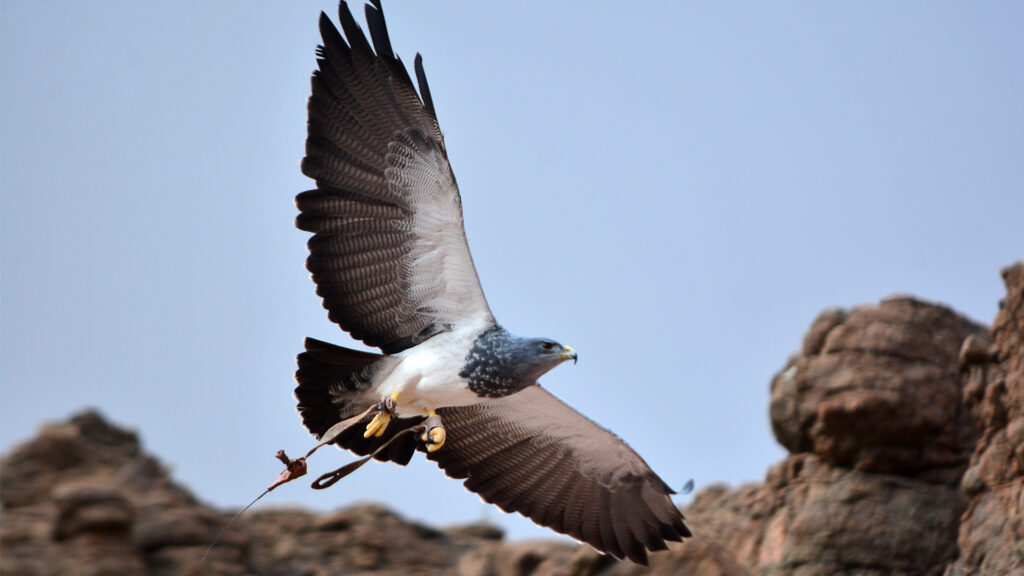BLACK-CHESTED BUZZARD-EAGLE
Geranoaetus melanoleucus

LENGTH

60 – 76 cm
WEIGHT

1,7 – 3,2 kg
LIFESPAN

42 years
This species belongs to the genus Geranoaetus and the family Accipitridae. It is widely distributed throughout South America and is one of the largest birds of prey in its region.
General characteristics
This bird measures approximately 60 to 76 cm in length, with a wingspan that can reach between 149 and 200 cm. Females are usually larger than males, which shows clear sexual dimorphism. Its adult plumage has dark grey upper parts, a black breast, white belly and broad wings; the tail is surprisingly short in relation to the wings. Juveniles have darker plumage, with reddish-brown tones and a brown-spotted belly.
Feeding
It feeds mainly on medium-sized mammals, such as native rodents.
It may also hunt birds, reptiles, or eat carrion if the occasion requires it.
Behaviour
The black-eared kite is usually seen alone or in pairs, flying over large areas using updrafts.
Its mid-morning or afternoon flights allow it to scan the open terrain in search of prey. It does not form large social groups and defends its territory, especially during the breeding season.
Reproduction
The pair perform courtship flights before sunset. They usually lay 1 to 3 eggs (usually 2) in a large nest of sticks on cliffs, crags or tall trees.
Incubation lasts about a month.
Threats
Threats include habitat loss due to human activities and direct persecution by farmers who consider them predators of livestock.
The use of baits or poison also affects their populations.
Distribution
The black-chested buzzard-eagle is found in various South American countries, from Venezuela to Tierra del Fuego, as well as in southern Brazil, Paraguay, Uruguay, and Argentina.
It prefers open areas such as steppes, scrubland, rocky slopes, and mountains, and occasionally descends to lower areas as long as there is open space to fly.

Did you know?
The genus name Geranoaetus comes from the Greek words “geranos” (crane) and “aetos” (eagle), while the species name melanoleucus means “black and white”, referring to its contrasting plumage.
Its wings are so broad and its tail so short that when it is perched, it appears to have no visible tail.
In some areas, it has been persecuted by farmers who see it as a threat to young lambs, although its ecological role is very valuable.
Conservation status
